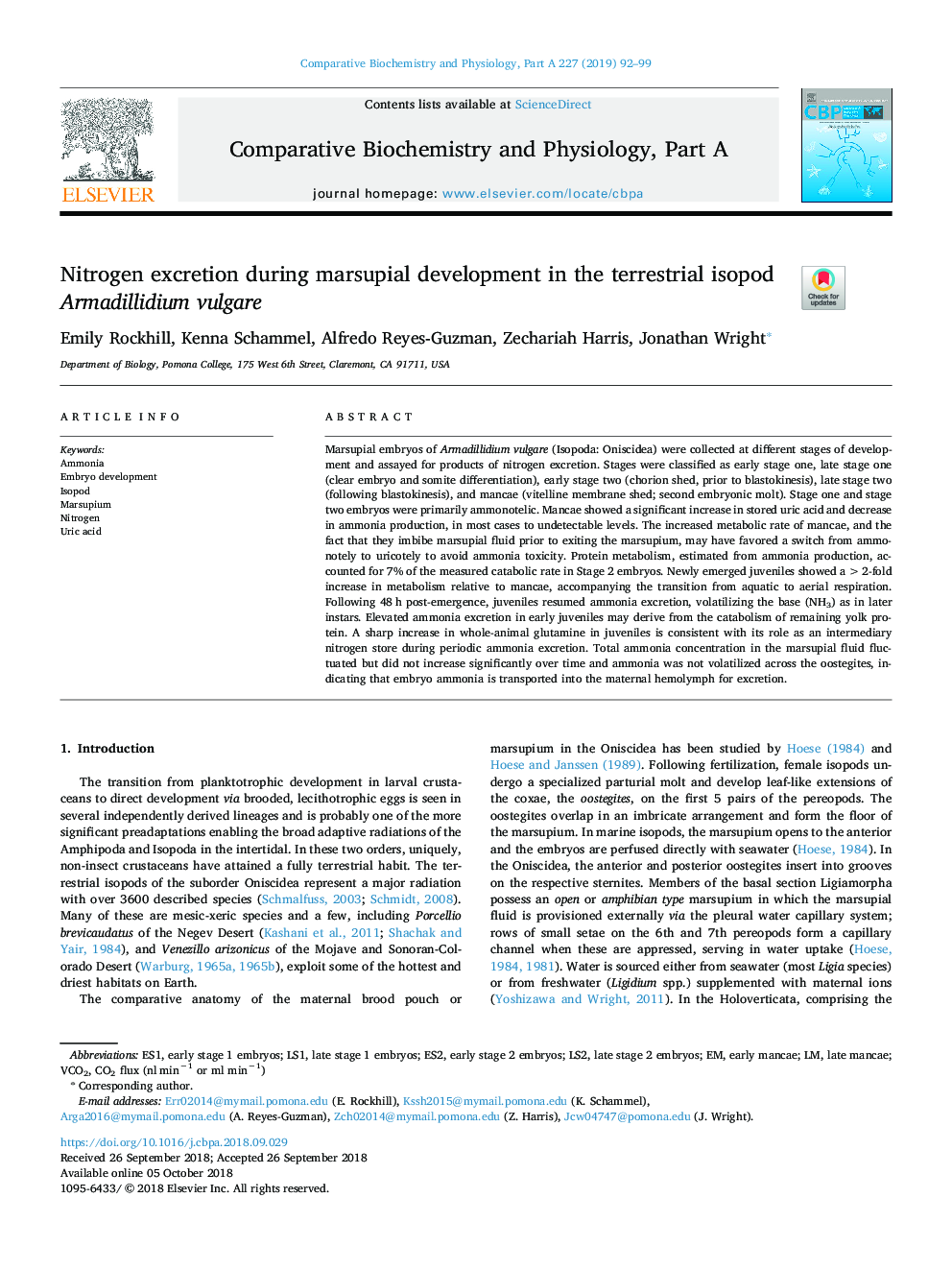| کد مقاله | کد نشریه | سال انتشار | مقاله انگلیسی | نسخه تمام متن |
|---|---|---|---|---|
| 11026102 | 1666430 | 2019 | 8 صفحه PDF | دانلود رایگان |
عنوان انگلیسی مقاله ISI
Nitrogen excretion during marsupial development in the terrestrial isopod Armadillidium vulgare
دانلود مقاله + سفارش ترجمه
دانلود مقاله ISI انگلیسی
رایگان برای ایرانیان
کلمات کلیدی
موضوعات مرتبط
علوم زیستی و بیوفناوری
بیوشیمی، ژنتیک و زیست شناسی مولکولی
زیست شیمی
پیش نمایش صفحه اول مقاله

چکیده انگلیسی
Marsupial embryos of Armadillidium vulgare (Isopoda: Oniscidea) were collected at different stages of development and assayed for products of nitrogen excretion. Stages were classified as early stage one, late stage one (clear embryo and somite differentiation), early stage two (chorion shed, prior to blastokinesis), late stage two (following blastokinesis), and mancae (vitelline membrane shed; second embryonic molt). Stage one and stage two embryos were primarily ammonotelic. Mancae showed a significant increase in stored uric acid and decrease in ammonia production, in most cases to undetectable levels. The increased metabolic rate of mancae, and the fact that they imbibe marsupial fluid prior to exiting the marsupium, may have favored a switch from ammonotely to uricotely to avoid ammonia toxicity. Protein metabolism, estimated from ammonia production, accounted for 7% of the measured catabolic rate in Stage 2 embryos. Newly emerged juveniles showed a >2-fold increase in metabolism relative to mancae, accompanying the transition from aquatic to aerial respiration. Following 48â¯h post-emergence, juveniles resumed ammonia excretion, volatilizing the base (NH3) as in later instars. Elevated ammonia excretion in early juveniles may derive from the catabolism of remaining yolk protein. A sharp increase in whole-animal glutamine in juveniles is consistent with its role as an intermediary nitrogen store during periodic ammonia excretion. Total ammonia concentration in the marsupial fluid fluctuated but did not increase significantly over time and ammonia was not volatilized across the oostegites, indicating that embryo ammonia is transported into the maternal hemolymph for excretion.
ناشر
Database: Elsevier - ScienceDirect (ساینس دایرکت)
Journal: Comparative Biochemistry and Physiology Part A: Molecular & Integrative Physiology - Volume 227, January 2019, Pages 92-99
Journal: Comparative Biochemistry and Physiology Part A: Molecular & Integrative Physiology - Volume 227, January 2019, Pages 92-99
نویسندگان
Emily Rockhill, Kenna Schammel, Alfredo Reyes-Guzman, Zechariah Harris, Jonathan Wright,